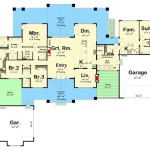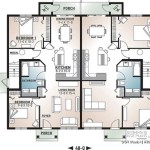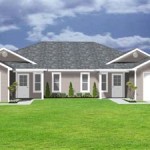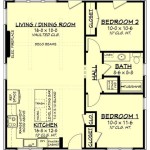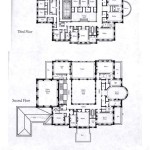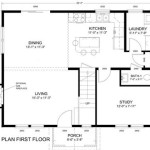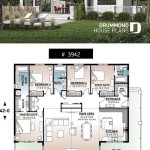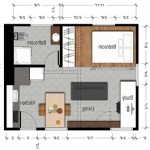Luxury Log Cabins: Exploring Exquisite Floor Plans
The allure of a log cabin evokes images of rustic charm, cozy evenings by the fire, and a connection with nature. However, luxury log cabins transcend the simple rustic aesthetic, offering spacious living, modern amenities, and sophisticated design. At the heart of a truly exceptional log cabin lies a well-conceived floor plan that maximizes space, comfort, and visual appeal. This article delves into the nuances of luxury log cabin floor plans, examining key considerations and design elements that contribute to their overall success.
Optimizing Space and Functionality
One of the primary goals in designing a luxury log cabin floor plan is to optimize the use of available space. This goes beyond merely increasing square footage; it involves carefully considering how different areas of the cabin interact with each other and how the space can be utilized most efficiently. Open-concept living areas are a common feature, creating a sense of spaciousness and facilitating natural light flow. These areas typically combine the living room, dining area, and kitchen, promoting social interaction and creating a central hub for family and guests.
Strategic placement of windows is crucial for maximizing natural light and providing panoramic views of the surrounding landscape. Large windows, skylights, and strategically positioned doors can transform a cabin, creating a bright and airy atmosphere. Furthermore, the flow of traffic throughout the cabin should be carefully considered to ensure ease of movement and prevent congestion. Hallways should be wide enough to accommodate furniture and foot traffic, and doorways should be positioned to minimize obstructions.
The functionality of each space is also paramount. Kitchens should be designed with ample counter space, storage, and high-end appliances, catering to the needs of serious cooks. Bedrooms should be generously sized and feature en-suite bathrooms for added privacy and convenience. Mudrooms or entryways are essential for storing outdoor gear and preventing dirt from being tracked throughout the cabin. Dedicated spaces for laundry, home offices, or entertainment rooms can further enhance the functionality of the cabin, providing additional amenities for a comfortable and convenient lifestyle.
The use of vertical space should not be overlooked. Vaulted ceilings create a sense of grandeur and allow for the installation of large windows that capture natural light and views. Lofts can be used as additional living spaces, bedrooms, or offices, maximizing the usable area of the cabin without increasing the footprint. Careful consideration of the roofline and the integration of dormers can also add visual interest and functionality to the cabin's design.
Integrating Luxury Amenities and Design Elements
Luxury log cabins are distinguished by their integration of high-end amenities and sophisticated design elements. These features elevate the cabin experience, creating a comfortable and stylish environment that reflects the owner's personal taste and lifestyle. Fireplaces are often a focal point, providing warmth, ambiance, and a sense of rustic elegance. They can be crafted from stone, brick, or other natural materials and feature intricate detailing and custom designs.
Gourmet kitchens are a hallmark of luxury log cabins, featuring top-of-the-line appliances, custom cabinetry, and premium countertops. Islands or peninsulas provide additional workspace and seating, while walk-in pantries offer ample storage for food and kitchenware. Wine cellars or bars can also be incorporated into the kitchen design, catering to the needs of discerning homeowners.
Spa-like bathrooms are another essential feature of luxury log cabins. These bathrooms typically include features such as soaking tubs, walk-in showers, double vanities, and heated floors. Natural stone and tile are often used to create a luxurious and relaxing atmosphere. Saunas or steam rooms can also be incorporated into the bathroom design, providing additional amenities for relaxation and wellness.
Outdoor living spaces are an integral part of the luxury log cabin experience. Decks, patios, and porches provide opportunities for outdoor dining, relaxation, and entertaining. Fire pits, outdoor kitchens, and hot tubs can further enhance the outdoor living experience, creating a year-round oasis for enjoying the natural surroundings. Careful consideration should be given to the orientation of these spaces to maximize sunlight and views while providing privacy and protection from the elements.
Smart home technology can also be integrated into the floor plan to enhance comfort, convenience, and security. Automated lighting, climate control, and security systems can be controlled remotely, providing homeowners with greater control over their living environment. Home theaters, game rooms, and other entertainment spaces can also be incorporated into the design, providing opportunities for relaxation and recreation.
Considering the Site and Environmental Factors
The design of a luxury log cabin floor plan should always take into account the specific site and environmental factors. The orientation of the cabin, the slope of the land, and the prevailing winds can all influence the design and layout of the floor plan. Proper site planning can maximize natural light, minimize energy consumption, and protect the cabin from the elements.
The orientation of the cabin should be carefully considered to maximize solar gain in the winter and minimize heat gain in the summer. South-facing windows can capture sunlight during the winter months, reducing the need for artificial heating. Overhangs and shading devices can be used to block sunlight during the summer months, preventing the cabin from overheating. Natural ventilation can also be used to cool the cabin in the summer by taking advantage of prevailing winds.
The slope of the land can also influence the design of the floor plan. Cabins built on sloped sites may require special foundations or retaining walls to ensure stability. The design of the floor plan can also be adapted to take advantage of the natural topography, creating multi-level spaces or walk-out basements. Erosion control measures should also be implemented to protect the site from soil erosion and water runoff.
The surrounding environment should also be considered when designing the floor plan. The cabin should be designed to blend seamlessly with the natural landscape, minimizing its impact on the environment. Native plants can be used in landscaping to attract wildlife and reduce water consumption. Sustainable building materials and construction techniques can also be used to minimize the environmental footprint of the cabin.
Local building codes and regulations should also be taken into account during the design process. These codes may dictate specific requirements for building setbacks, height restrictions, and fire safety. It is important to consult with local authorities and building professionals to ensure that the floor plan complies with all applicable regulations.
In summary, designing a luxury log cabin floor plan requires careful consideration of space optimization, luxury amenities, and site-specific factors. A well-designed floor plan will not only provide a comfortable and functional living space but also enhance the overall aesthetic appeal of the cabin and its connection to the natural environment. By paying attention to these key considerations, homeowners can create a truly exceptional log cabin that reflects their personal style and provides a lifetime of enjoyment.

Luxury Log Cabin Floor Plans Homes Honka Colorado Home Plan

Durango Manor Luxury Log Home Cabin Floor Plans House

Golden Eagle Log Homes Big Sky 9870al Floor Plan Cabin Plans Home

Luxury Log Home Floor Plans Cowboy Homes
Cypress Log Homes Florida Suwannee River

Domain Has Expired Log Cabin Floor Plans House

15 Floor Plans Ideas Cabin House

Custom Luxury Log Home In Pa Hochstetler Homes

Custom Log Timber Frame Hybrid Home Floor Plans By Wisconsin Homes

Exterior Interactive Home Tour

